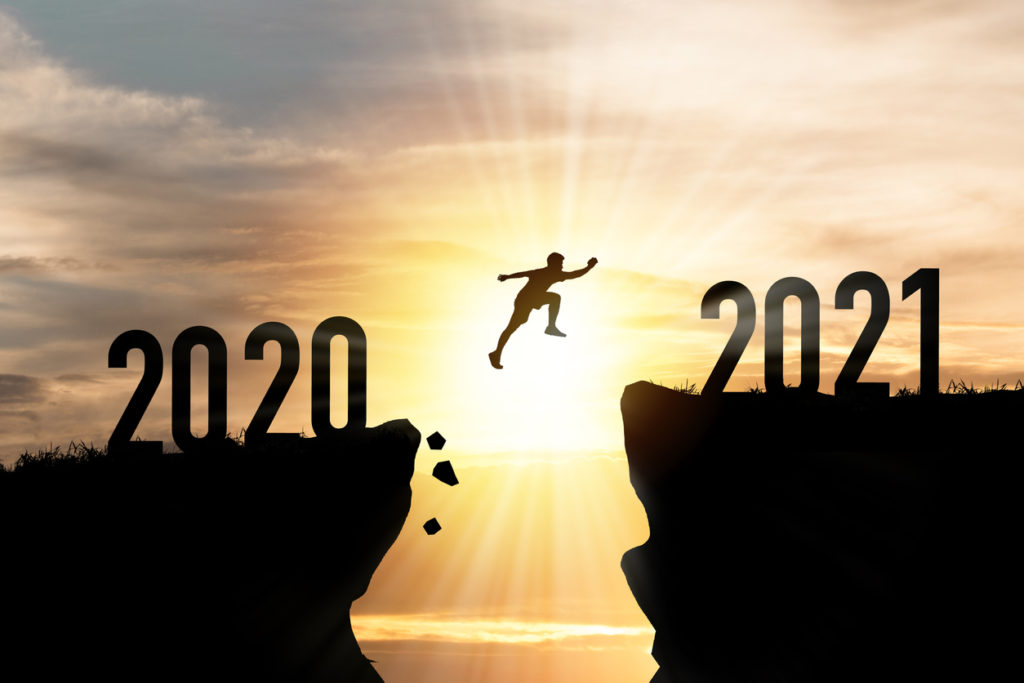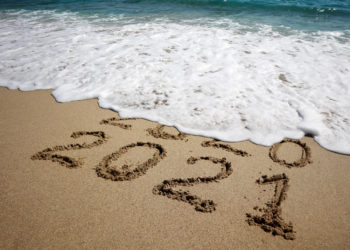New Year’s Resolutions – why bother?
Well, like many other strategies for growth and progress, we all find what works for us, and for some people, a resolution may not be it. But, I would put forward that even if you are not someone that likes to consider a professional new year’s resolution, you likely have goals you’ve constructed with your employer, and those goals require certain skills, attitudes, and perspectives. Why would you not want to consider what you “resolve” to do in the upcoming year to acquire or nurture those attributes?
The real power of the New Year’s Resolution in my opinion is reflection. We often lament (or take joy in!) the pace of change we’re experiencing. But regardless of whether it plagues or excites you, it’s happening! Doesn’t it make sense for all of us to take a beat and think about how we can be our best self? How can we contribute to our colleagues, our organizations, and even our industry so that the full team can also be its best self?
The real power of the New Year Resolution in my opinion is reflection.
So this month we asked the Chefs: What is your professional New Year’s Resolution?

Todd Carpenter: My professional resolution is to actively seek out ways to be more inclusive both individually and organizationally. Over the past year, with the Black Lives Matter protests and the many unfortunate examples of continued racism, it should be apparent to all that we as a society need to do better. We need to improve how we interact with the diverse world we live in. We need to improve the diversity of voices that we lift up and promote. We need to foster the careers of a more diverse workforce, if the community who engage in scholarly communications is going to more closely reflect the broader society, because right now it doesn’t.
We need to foster the careers of a more diverse workforce, if the community who engage in scholarly communications is going to more closely reflect the broader society, because right now it doesn’t.
I acknowledge that my own position as the head of NISO offers only a modest ability to affect change. We’re a small non-profit that relies heavily on the contributions of volunteers to accomplish our work. We don’t hire those volunteers and we can’t force member organizations to hire a more diverse and inclusive workforce. However, we can lead by example, and I, with the support of the NISO Board, will do my best to improve that in the coming year.
There are things that we can do, and I am committed to making sure my organization aggressively pursues the following: First, more actively recruit more diverse working group participants to engage in our standards work, in as much as possible. We can’t just wait around for more diverse people to contribute; we need to seek them out and actively engage their participation. Technical development work draws from a very homogenous pool of people, and we need to work to change that. Engaging in NISO’s work can be a platform for volunteers to raise their profile in the community and we should push this opportunity forward for others. Next, we actively seek diversity in our programs, but we can do better. Who an organization puts on a stage to highlight their work is an important signal that we value diverse perspectives. Finally, we will work to remove some of the barriers that have hindered diverse engagement in our programs.
Who an organization puts on a stage to highlight their work is an important signal that we value diverse perspectives?
Many organizations, when putting on a conference or meeting, focus first on the income demands related of holding that meeting. While everyone enjoys a nice hotel (when we were meeting in-person), a nice reception at a unique locale, or a good meal, the costs of these add up. Having an expensive meeting is, by definition, exclusive and reduces the ability of diverse communities to engage. Of course, few organizations have the capacity to lose money on events (and NISO certainly isn’t one!), but there are ways to limit costs and make participation more accessible. We took that approach in 2020 and have doubled down even further with our next conference.
Also, recognizing that hosting programs and working group meetings in time zones that are useful for those in the Americas is also exclusionary. Doing so creates barriers to participation, particularly from those in the Asia-Pacific or in Southern Asia, who regularly have to be up in the middle of the night to engage. We’ve begun extending our “working hours” in recognition that others have for years done this to engage with us. We should extend them the same courtesy. There are other things we are putting in place in service of this large goal, but I am hoping that we can see some tangible results by the end of 2021 in terms of the types of people who are engaging in our work and programs.
I am hoping that we can see some tangible results by the end of 2021 in terms of the types of people who are engaging in our work and programs.
Haseeb Irfanullah: I have decided not to have a professional New Year’s Resolution again. And I should blame, or rather thank, coronavirus for that.
My first successful New Year’s Resolution was in 2007. I was brave enough to decide that in the New Year, I would not bring office work home. And, as far I can remember, I managed to do that, even if it meant working quite late in the office. But I am afraid 2008 and later years did not see me making such crazy promises ever again.
Like many Scholarly Kitchen readers, I also planned so many things for 2020. So many conferences to attend, for example, around the world, as last year was especially important for biodiversity conservation and climate change — the professional areas I work in. All either got postponed or went virtual.
I have decided not to have a professional New Year resolution again. And I should blame, or rather thank, coronavirus for that.
But, as I look back, 2020 has been one of the most productive years of my life in terms of freelance consultancy, including San Francisco-based online climate change TV (Cimpatico Studios); writing op-eds and blog posts literally every other week; speaking at a number of international forums for the first time, like the Society for Scholarly Publishing (SSP); and creating numerous new connections with organizations and individuals. I even wrote a couple of journal articles, after a seven year gap, and got accepted!
I, however, didn’t expect 2020 to be like this at the beginning of lockdown around April. Apart from being anxious about the pandemic, one thing I did was stay focused to utilize my stay-home time as much as possible (of course, besides leisurely watching American crime movies from the 1940s and the 1950s).
Staying home for almost 10 months now does change your perception towards life. I have started to believe — a New Year’s Resolution is not necessarily something we decide on or promise ourselves around the first days of a new year. It could come later on as an opportunity or a revelation to work on, to build on, and celebrate.
David Smith: They are:
1) To take a proper lunchtime and also regular breaks throughout the day to get up and away from my laptop and desk.
Previously I very rarely made it to my laptop; a typical day — arrive early, dock laptop, grab coffee, have 1st meeting, have 2nd meeting etc., undock laptop, get in car, drive home, do laptop work on a Friday at home. But now they all happen in the little rectangles of fun on our screens. I’m busy… so busy… but I’m not moving anything like enough.
This will continue for me for 2021 because, pandemic notwithstanding, we are completely refurbishing our offices this year.
2) I’m also looking to take control of my meeting calendar. Blocking out some chunks of time to actually, y’know, think about stuff and have the time to plan and refine things.
Blocking out some chunks of time to actually, y’know, think about stuff and have the time to plan and refine things.
3) And maybe not so much of an issue this year, but I have no intention of going back to my previous commute. It didn’t bother me; it was 90+ mins in the car each way – circa 20K miles a year. And then I did the calculations. Over 2 metric tonnes of CO2 in the fuel I burned. And One Whole Month spent in my car. Two sums that stopped me dead in my tracks. In fact, myself and one of my team account for 16% of the IET’s carbon footprint from car commuting. When we get our space back, I’ll be using it as a resource – going there for a true purpose, not just to park my car and laptop.
…myself and one of my team account for 16% of the IETs carbon footprint from car commuting. When we get our space back, I’ll be using it as a resource – going there for a true purpose, not just to park my car and laptop.
4) And on the subject of carbon, we are looking to be carbon neutral by 2030, so I’m digging into what that means for our technology and how to budget and account for the greenhouse gasses our work emits. There’s a lot of work to do there.
Karin Wulf: For Monday, January 18th in the US, Martin Luther King Jr. Day, the incoming Biden-Harris administration called for a national day of service. In fact, in 1994 Congress passed legislation making MLK day the only federal holiday that is recognized as a day of service, although other days (notably 9/11 anniversaries) have also been periodically designated for service. Other administrations have asked for particular attention to national service (including President Obama’s) but this one sat differently for many of us.
The last weeks — months, years — have highlighted inequality and violence and what a friend remarked as “the latent terror that people of color have always lived with.” My professional New Year’s Resolution is to be more intentional and intensive about service to my professional colleagues and community. The twin pandemic and political crises bring home just how importantly we need to cultivate and encourage a measured, steady commitment to service, whether of the one-time daily kind or the multiple years of one day at a time contributions kind. This period will have changed us, and while we can’t control many of those changes, some we can, and we should.
My professional new year resolution is to be more intentional and intensive about service to my professional colleagues and community.
Alice Meadows: I’m pretty sure I won’t be the only Chef whose professional New Year’s Resolution is to do whatever I can to improve diversity, equity, and inclusion in our community. Last year’s Black Lives Matter protests in the wake of the murders of George Floyd, Breonna Taylor, and others were a much-needed reminder that we still need to do so much more to ensure that our society is genuinely diverse, equitable, and inclusive. And that includes the scholarly communications and publishing community.
I’m especially conscious that I have a responsibility — and opportunity — to effect change in our own community as incoming President of the SSP. We must continue to ramp up the work that is already happening, for example, through our large and active DEI Committee, led by Sabby Kaur, Damita Snow, and Randy Townsend; through our ongoing involvement with C4DISC, which we helped found back in 2016 and which is now officially launched as a membership organization; and through our increasingly diverse Board and committees. I’d also like us to get better at setting SMART goals on DEI, and measuring our progress against them, so that we can understand what’s working and what isn’t. My own organization, NISO, has also made a strong commitment to improving DEI in our work and our community, including creating a DEI committee to advise us on priorities, oversee our actions, and help track results. I’m happy to be part of that work too, especially the NISO Plus scholarship program, which is intended specifically to identify and nurture a diverse, equitable, and inclusive next generation of information community leaders.
I’m especially conscious that I have a responsibility – and opportunity – to effect change in our own community as incoming President of SSP. … through our large and active DEI Committee…through our ongoing involvement with C4DISC…and through our increasingly diverse Board and committees.
To make both our own organizations and our wider community equitable, those of us who have more power — because of our ethnicity, our socio-economic status, or other privilege — must be prepared to make space for those who have less, including by stepping back, or stepping down. So, this year, whenever possible, I will be looking for opportunities to include and promote other voices and views — especially of those that are underrepresented, marginalized, or discriminated against. Equally important, I will do whatever I can to ensure that their voices are heard in our community, including actively listening to what they have to say myself, and making sure they’re part of our decision-making.
Judy Luther: To Evaluate Professional Meetings Thru a New Lens
I really missed SSP last year and the many conversations, both planned and spontaneous that occur with those we know and those we have just met. In addition to networking, conferences ideally are a rich source of information from presentations as well as from vendors and service providers. It is a vital way to stay on top of industry developments and trends.
By fall 2020, I noticed a wide range of 8-10 programs, each of which caught my attention and over the last few months I signed up for more programs than I could have possibly attended in person. Some were free, some were priced for online, and all were affordable without the costs of travel, especially internationally. While I knew about programs such as ConTech and APE, others were new to me such as Rave and Elevate Publishing (Adweek). Topics covered all aspects of digital content, publishing, business models, higher education, and organizational change. They covered not just where scholarly publishing is headed, but the broader environment affecting related sectors.
By fall 2020 I noticed a wide range of 8-10 programs each of which caught my attention and over the last few months I signed up for more programs than I could have possibly attended in person
One content theme that emerged is the profound impact of long-term digital trends on organizational structure. It is time to rethink reporting structures and business models – who is the customer and how are they best served? Existing org charts align staff based on reporting structures around a content format or a membership/business model. These are silos that are breaking down in an online environment where the user is more global and more diverse. Growth opportunities will require that we rethink the value proposition, what is offered to whom and how.
Another theme of course, is the impact of the pandemic, which has prohibited travel, forcing all activities of an in-person meeting onto the Internet. Although most of the current platforms were not designed to handle much more than content presentation, there are tools that enable networking that are still in the early stages of development. Some unfortunately remind me of Second Life with personal avatars. However, others are showing signs of replicating the process of navigating a room full of people and connecting with groups and others individually. As I consider what to attend in 2021, I will have more choices and a different way to think about how I stay on top of trends and connect with others in new ways.
As I consider what to attend in 2021, I will have more choices and a different way to think about how I stay on top of trends and connect with others in new ways.
Jasmine Wallace: Contrary to the fact that in many ways the entire world was at a standstill, everything for me was moving so quickly. Time had no boundaries and work consumed nearly every waking hour of my day. I was so grateful for having spent time working on bettering time management skills the year before because, despite all the hustle and bustle, somehow I was able to keep finding balance amongst the chaos.
At the beginning of 2020, pivot, expedite, and rapidly became the buzz words that defined my daily life. My organizational needs required that we focused on getting accurate and timely information out to the public as soon as yesterday. And for the microbial scientific community, it was absolutely necessary for that to be our goal. Looking back over the last year, I have to take a minute to catch my breath. As a result, I’ve resolved that this year for me will deliberately be about slowing down.
Looking back over the last year, I have to take a minute to catch my breath. As a result, I’ve resolved that this year for me will deliberately be about slowing down.
While every editorial workflow change that I helped to develop and implement was necessary, the time has come to reflect and assess– to take a minute, not just getting things done and pivoting, but to dwell in the unexpected blessings of last year’s forceful push to change nearly everything that had become “normal”. Leaving behind the hurry initiated when whirling into a virtual workforce overnight and homing in on what should and shouldn’t be (dis)continued.
As strange as it might seem to move slower, I believe that slowness is the antidote for a seemingly out of control controlled 2020.
As strange as it might seem to move slower, I believe that slowness is the antidote for a seemingly out of control 2020. A slow and steady pace in 2021 will be the major difference for me between success or failure in the upcoming year. And therefore, also the difference between burning out mid-year or thriving.
Now it’s your turn! What is your professional New Year’s Resolution?



